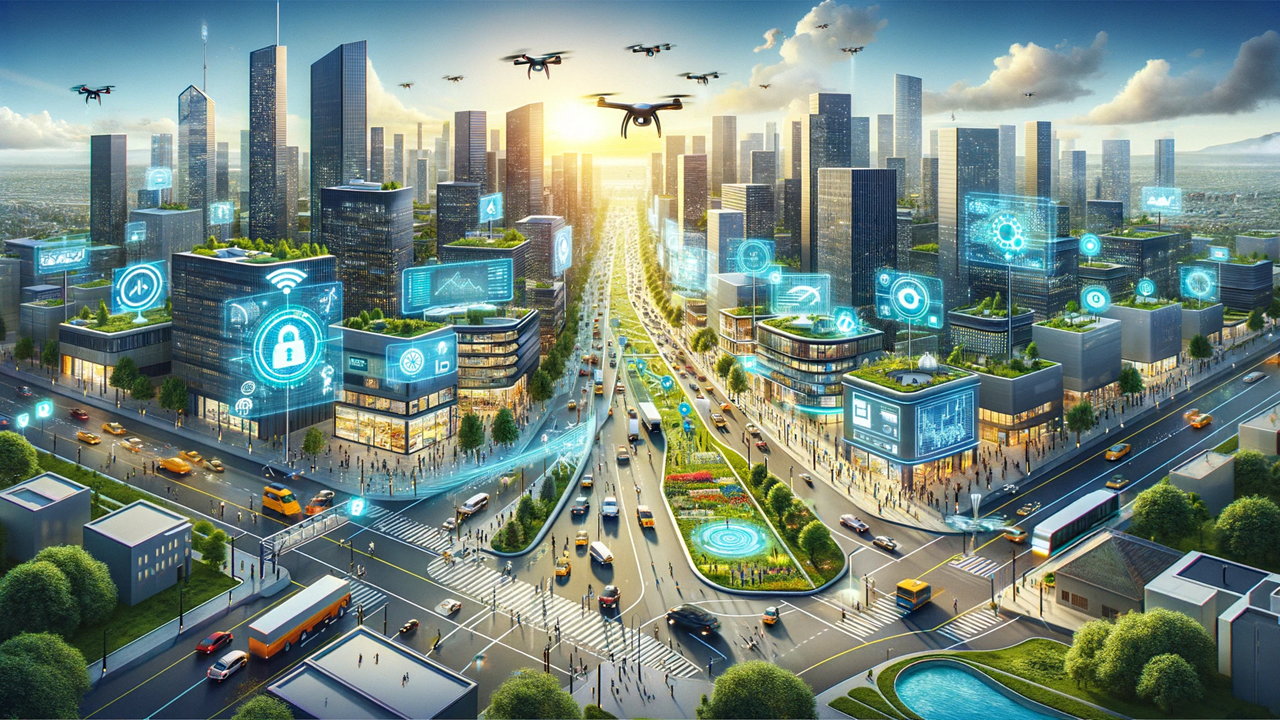The Smart Revolution: How AI and IoT are Crafting the Urban Fabric of Tomorrow
The integration of Artificial Intelligence (AI) and the Internet of Things (IoT) is revolutionizing urban landscapes, leading to the development of smart cities. This article explores how these technologies are enhancing urban mobility, improving public safety, transforming utility management, and contributing to environmental sustainability. With cities like Singapore, Barcelona, and Tokyo at the forefront, the future of urban living looks promising, efficient, and sustainable.

In the quest to create more livable, efficient, and sustainable environments, the amalgamation of Artificial Intelligence (AI) and the Internet of Things (IoT) is paving the way for the cities of tomorrow. These technologies are not just augmenting urban living but are at the forefront of revolutionizing how city infrastructures operate, leading to the emergence of smart cities. This article delves into the transformative power of AI and IoT in shaping urban landscapes, illustrating how these innovations are integral in addressing contemporary urban challenges.
The Convergence of AI and IoT in Urban Development
The integration of AI and IoT technologies is the cornerstone of smart city development. AI, with its ability to process and analyze vast amounts of data, combined with IoT devices that collect this data in real-time, are creating intelligent urban ecosystems. This synergy enhances city operations, from traffic management to energy conservation, by making them more responsive and efficient.
Enhancing Urban Mobility with AI and IoT
One of the most visible impacts of AI and IoT is in the realm of urban mobility. By analyzing data from traffic cameras, sensors, and GPS devices, these technologies are making transportation systems more adaptive. This results in reduced traffic congestion, optimized public transportation schedules, and smart parking solutions, significantly improving the urban commute experience.
Revolutionizing Public Safety
AI and IoT are also playing a crucial role in enhancing public safety. Smart surveillance systems equipped with AI algorithms can monitor urban areas in real-time, identifying potential safety threats and enabling quicker emergency response. This proactive approach to public safety is making cities safer for everyone.
Transforming Utility Management
The management of urban utilities like water and electricity is undergoing a transformation, thanks to AI and IoT. Smart grids, for instance, optimize electricity distribution to meet demand efficiently, reducing waste. Similarly, IoT sensors in water systems can detect leaks early, conserving a precious resource.
The Role of AI and IoT in Environmental Sustainability
Sustainability is another critical area where AI and IoT are making a significant impact. These technologies monitor environmental conditions, track pollution levels, and optimize resource use, aiding cities in their quest to become greener and more sustainable.
Economic Implications of AI and IoT in Cities
The economic benefits of integrating AI and IoT into urban infrastructure are manifold. Beyond efficiency gains and cost savings, these technologies are fostering new industries and job opportunities, contributing to a vibrant urban economy.
Challenges and Solutions
Despite their potential, the deployment of AI and IoT in cities is not without challenges. Privacy concerns, data security, and the complexity of implementing these technologies at scale are significant hurdles. However, with robust policy frameworks and continued innovation, these challenges are being addressed.
The Future is Here: AI and IoT in Action
Cities like Singapore, Barcelona, and Tokyo are leading examples of how AI and IoT can transform urban environments. These cities have implemented smart technologies in various sectors, from transportation to public services, showcasing the potential of AI and IoT in creating efficient, safe, and sustainable urban spaces.
Engaging Citizens in the Smart City Revolution
For smart cities to truly flourish, citizen engagement is essential. Technologies like AI and IoT should serve to enhance the quality of life for all city residents, necessitating mechanisms for community involvement and feedback.
Conclusion: The Path Forward
The cities of tomorrow, shaped by AI and IoT, promise to be more livable, efficient, and sustainable. While challenges remain, the potential of these technologies to transform urban living is immense. As we move forward, it is crucial to ensure that the development of smart cities is inclusive, sustainable, and geared towards enhancing the quality of urban life for all.
- READ MORE ON:
- Smart Cities
- AI
- IoT
- Urban Development
- Sustainability
- Public Safety
- Urban Mobility
ALSO READ
Haiti's Energy Crisis Deepens as Peligre Hydroelectric Plant Shuts Down
Trash to Treasure: Zero-Waste Workshop Revolutionizes Plastic Usage in Taipei
Engine Failure Incident Grounds Cathay Pacific's A350 Fleet
Indo-American Vote Campaign Launched Ahead of Presidential Elections
Polish Airspace Secured Amid Russian Air Strikes on Ukraine










